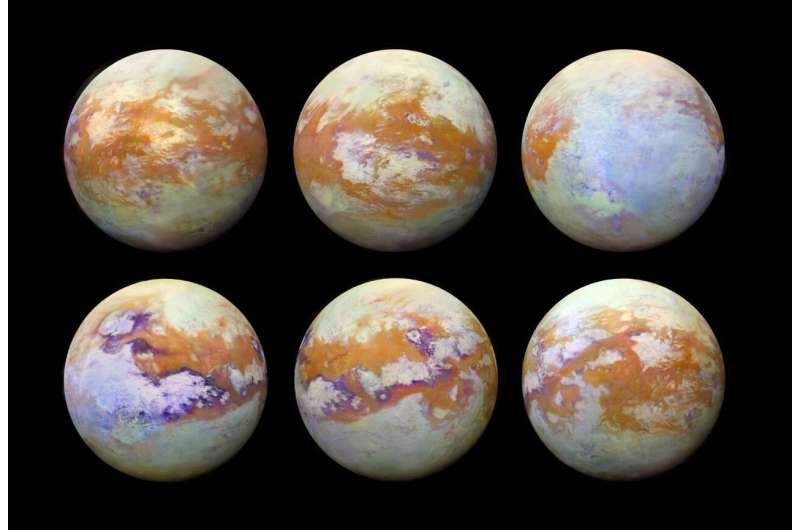
In a groundbreaking study, researchers suggest that Saturn’s moon Titan could serve as an ideal benchmark for studying exoplanet atmospheres. This revelation stems from data collected by the NASA/ESA Cassini-Huygens mission, which explored Saturn and its moons from 2004 to 2017. The mission provided unprecedented insights into Titan’s atmosphere, methane cycle, and potential for life, offering a model for future exoplanetary studies.
The Cassini-Huygens mission revealed that Titan’s atmosphere is composed predominantly of nitrogen and methane, with the latter forming a cycle similar to Earth’s water cycle. These findings have sparked speculation about the possibility of life on Titan, particularly methanogenic organisms thriving in its methane lakes. Now, scientists are leveraging this data to enhance our understanding of exoplanetary atmospheres.
Titan’s Atmospheric Insights and Exoplanet Studies
According to a new study led by Prajwal Niraula, a graduate student at MIT, and co-authored by Juliet de Wit, an Associate Professor at MIT, Titan’s atmospheric data could significantly inform efforts to characterize exoplanet atmospheres. The study, published on the arXiv preprint server, emphasizes the challenges and potential mischaracterizations in identifying molecules within these atmospheres.
The research team utilized Cassini’s Visual and Infrared Mapping Spectrometer (VIMS) data, which conducted high-fidelity observations of Titan. These observations confirmed the moon’s atmospheric composition and revealed a methane cycle akin to Earth’s hydrological cycle. Such insights are crucial for astronomers aiming to interpret exoplanetary data accurately.
“In this study, our primary focus is to leverage Titan’s precise transmission spectrum and our existing knowledge of its atmosphere to investigate the strengths and limitations of exoplanet atmospheric retrievals,” explained Niraula and de Wit.
Challenges in Exoplanetary Atmosphere Characterization
The characterization of exoplanet atmospheres has advanced significantly with the deployment of next-generation observatories like the James Webb Space Telescope (JWST). These instruments have transitioned the field from mere discovery to detailed characterization, allowing astronomers to observe exoplanets directly and analyze their atmospheric compositions.
However, the challenge remains in accurately identifying chemical spectra to determine the existence of biosignatures. Niraula and de Wit’s study highlights the potential for misidentification of spectral signatures, which could lead to biases in understanding other atmospheric parameters.
“Spectral signatures could not only be easily misidentified, but their misidentification can also lead to biases on other atmospheric parameters,” the researchers noted. “This focus is timely owing to existing concerns associated with the possible misinterpretation of molecular features.”
Implications for Future Exoplanet Research
As the search for habitable exoplanets intensifies, the insights gained from Titan’s atmospheric studies are invaluable. The ability to accurately identify potential biosignatures is crucial in the quest to find Earth-like planets. The study underscores the importance of refining models used to interpret exoplanetary data, highlighting the need to bridge the gap between detection and retrieval processes.
Looking ahead, the James Webb Space Telescope will be joined by the Nancy Grace Roman Space Telescope and several ground-based observatories like the Extremely Large Telescope (ELT). These instruments will further enhance our ability to conduct direct imaging studies and characterize exoplanet atmospheres.
“What can we reliably say from this data? That question comes in two forms: ‘What can we reliably say from these data given our current opacity/stellar/atmospheric models?’ and ‘What could we say reliably from these data if we had perfect models?'” the researchers concluded.
The study by Niraula and de Wit represents a significant step forward in exoplanetary research, offering a framework for future studies to build upon. As technology advances and more exoplanets are discovered, the lessons learned from Titan will continue to guide astronomers in their quest to understand the universe beyond our solar system.






